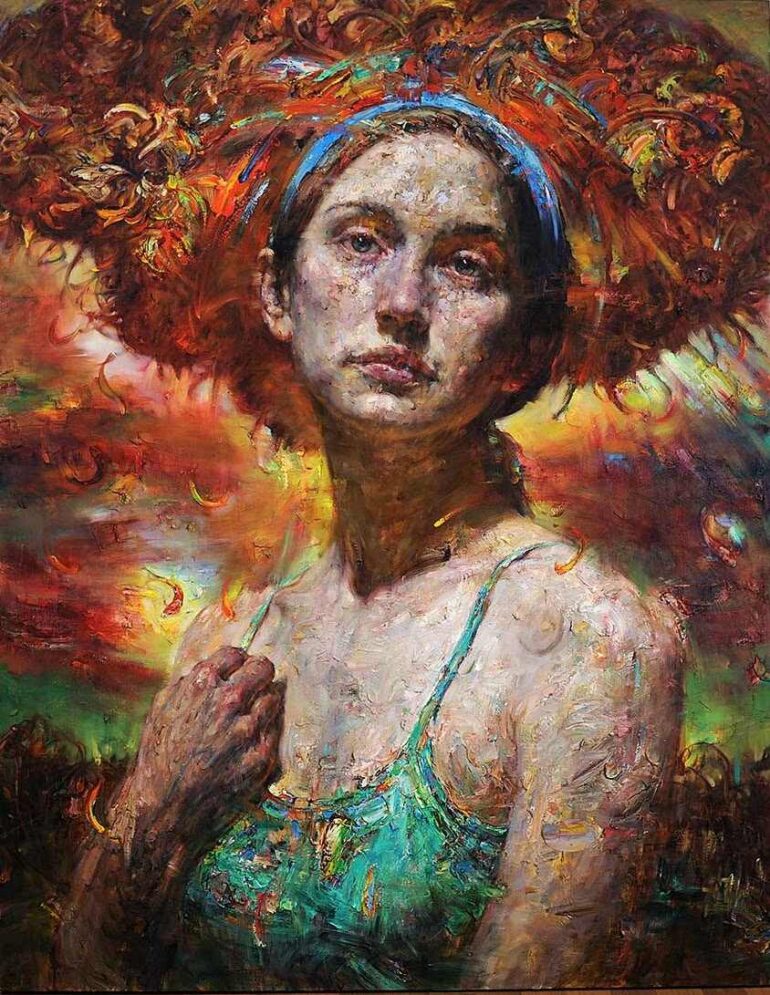Exclusive Interview with Victor Wang, 1st Prize Winner of the 2024 Beautiful Bizarre Art Prize RAYMAR Traditional Art Award, interview by Richard Purssey for Issue 48
Victor Wang, the winner of the RAYMAR Traditional Art Award in the 2024 Beautiful Bizarre Art Prize, creates paintings that aren’t just canvases; they’re portals. Each stroke, each layer of colour, whispers stories of a life lived on the edge of revolution, a childhood spent amidst the vibrant chaos of a rapidly modernising China. Born in Qiqiher in the mid-20th century, Victor’s artistic journey is as layered and textured as his works themselves, a testament to the enduring power of the human spirit to find beauty amidst adversity.
His figures, often solitary or lost in contemplation, are imbued with a melancholic grace. They are not merely portraits, but reflections of the human condition, grappling with memory, loss, and the passage of time.
He favours bold, impasto brushstrokes, creating a textured surface that invites viewers to reach out and touch the swirling peaks and valleys. His works are a riot of colour, a vibrant counterpoint to the often muted tones of traditional Chinese art. Colour, for Victor, is not just a visual element; it is an emotional force. Victor employs a bold and expressive palette, drawing inspiration from the vibrant hues of the Chinese landscape and the raw energy of the human experience. Crimson reds evoke passion and defiance, while serene blues and greens whisper of tranquility and hope.
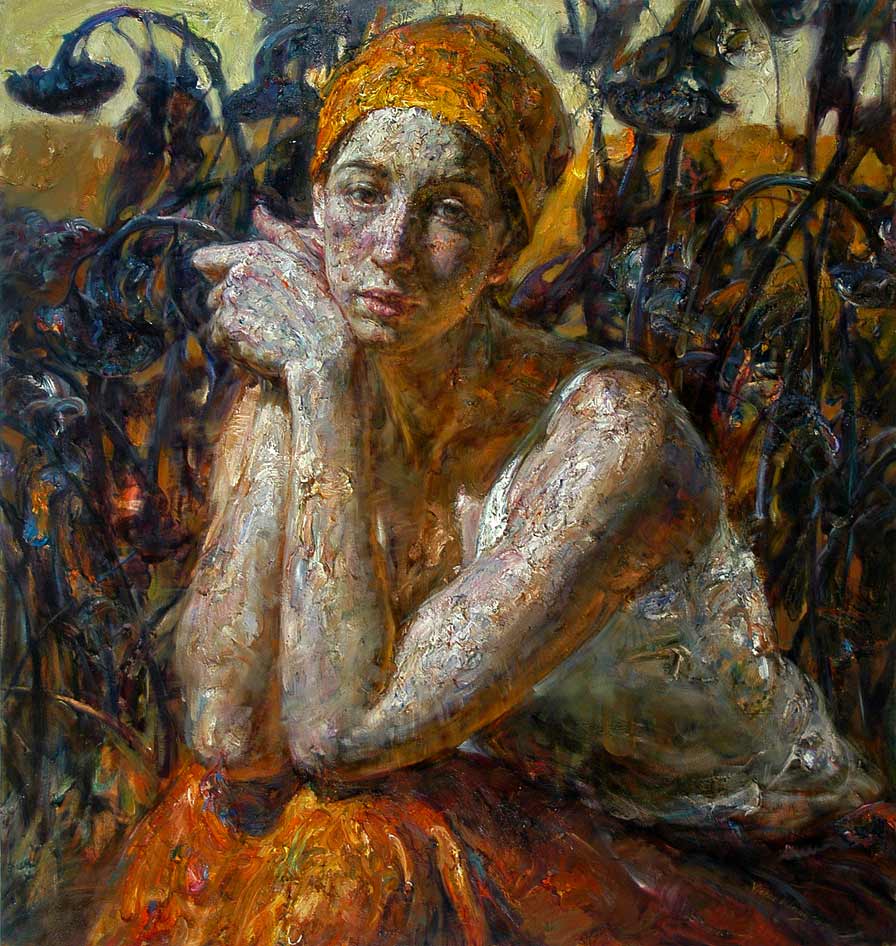
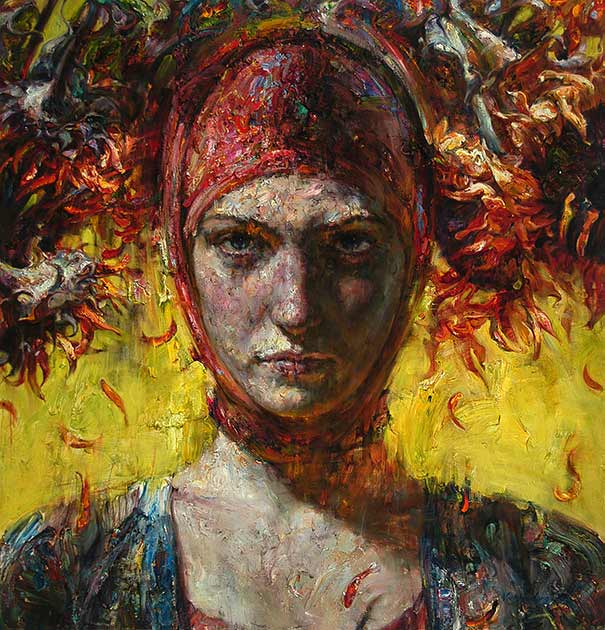
Yet, beneath this vibrant exterior lies a profound understanding of light and shadow. Rough, impastoed surfaces masterfully manipulate light, casting dramatic shadows that lend his figures a sense of both dynamism and vulnerability, creating a captivating sense of depth and atmosphere. His mastery of impasto, a technique that involves applying paint thickly with a palette knife, creates a three-dimensional surface that pulsates with energy.
His canvases are not merely flat representations of reality; they are tactile experiences, giving a depth beyond the two-dimensional aspect imposed by the canvas. But Victor’s artistic journey has been far from easy. The Cultural Revolution, a period of intense social and political upheaval, cast a long shadow over his childhood. Art, deemed a bourgeois indulgence, was suppressed.

Children with artistic aspirations like Victor Wang were forced to abandon their dreams and conform to the rigid ideological dictates of the regime. Interned for several years, he witnessed firsthand the devastating impact of ideological conformity on individual expression. This period of enforced conformity left an indelible mark on his psyche, fostering a deep yearning for freedom of expression.
In times of turmoil, art can be a powerful tool for resistance, expression, and connection,
reminding us of our shared humanity and the complexities of the world we inhabit.
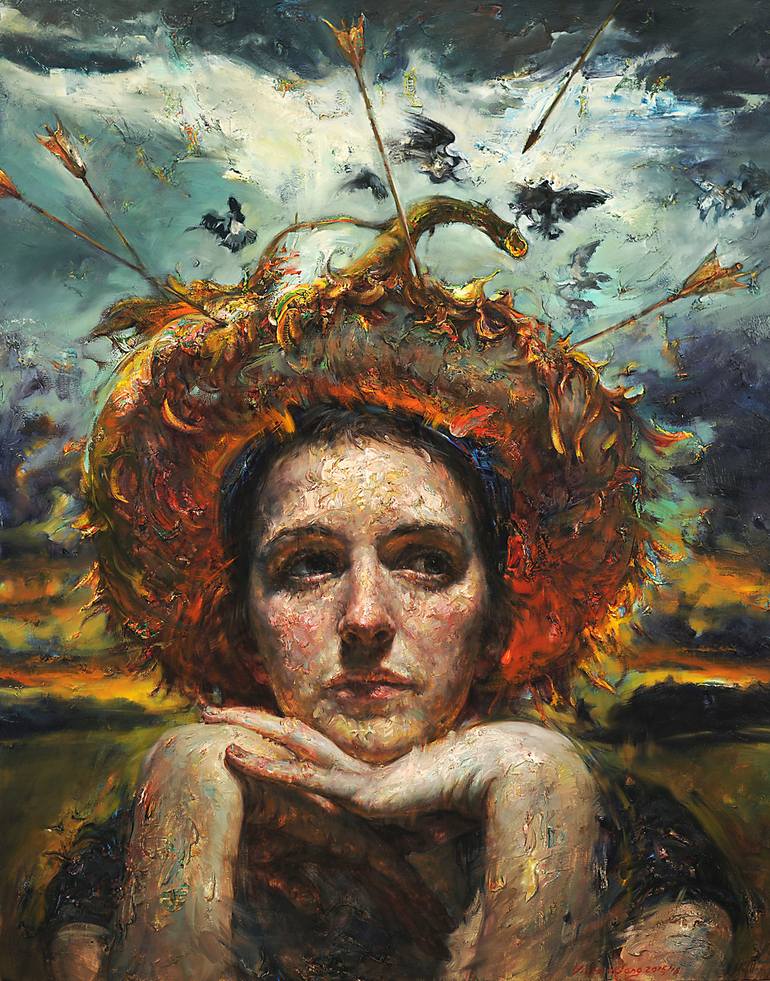
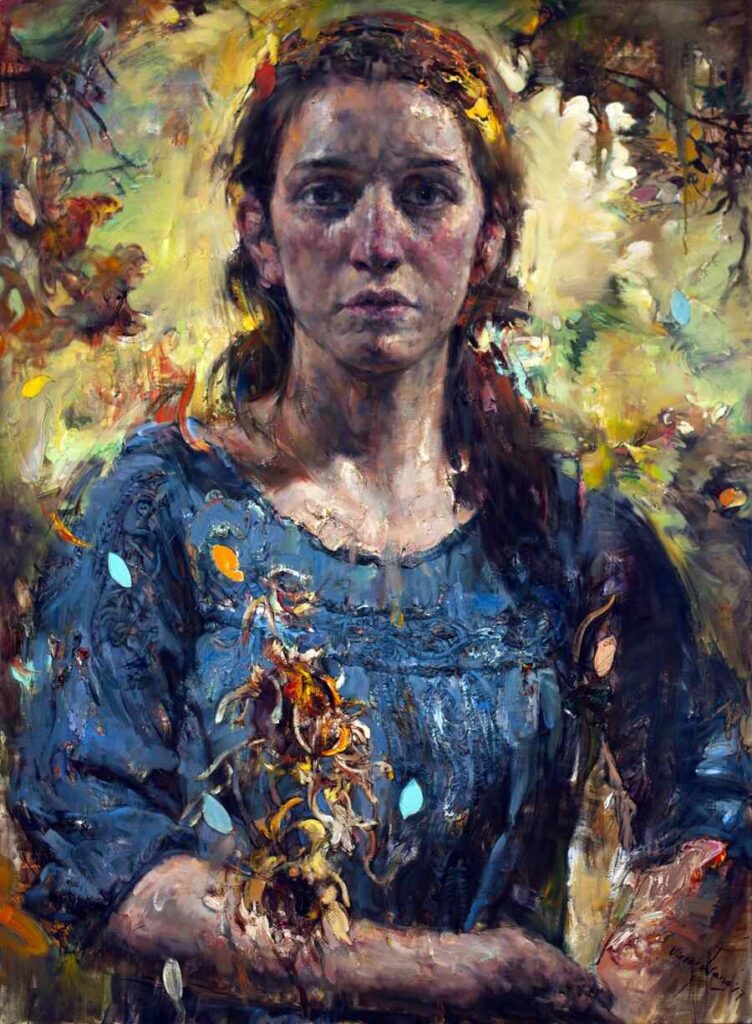
After the Cultural Revolution, with China once again opening up to artistic expression outside of the strictures of Maoism, Victor completed a Bachelor of Fine Arts at the Lu Xun Academy of Fine Arts in Shenyang, where he went on to become Assistant Professor in Painting and Drawing. In 1987 Victor emigrated to the United States and immersed himself in the vibrant American art scene, bringing his own technical flair, becoming both an internationally renowned representational artist and a guiding light and inspiration to the next generation of figurative artists as Professor in Painting & Drawing at the Department of Fine Arts, Fontbonne University, St. Louis.
Victor Wang’s journey is a reminder that art is not merely a means of self-expression, but a powerful tool for healing, for making sense of the world, and for connecting with the shared human experience. His paintings, with their vibrant hues, dramatic shadows, and deeply textured surfaces, invite us to pause, to contemplate, and to find beauty in the unexpected corners of our own lives.
Prepare to be captivated by the vibrant colours, the dynamic textures, and the profound emotional resonance of Victor Wang’s extraordinary paintings. We explore his unique artistic philosophy, the profound impact of his early life experiences on his work, and his enduring message of hope and resilience. We will also gain insights into his creative process, his inspirations, and his vision for the future of art.
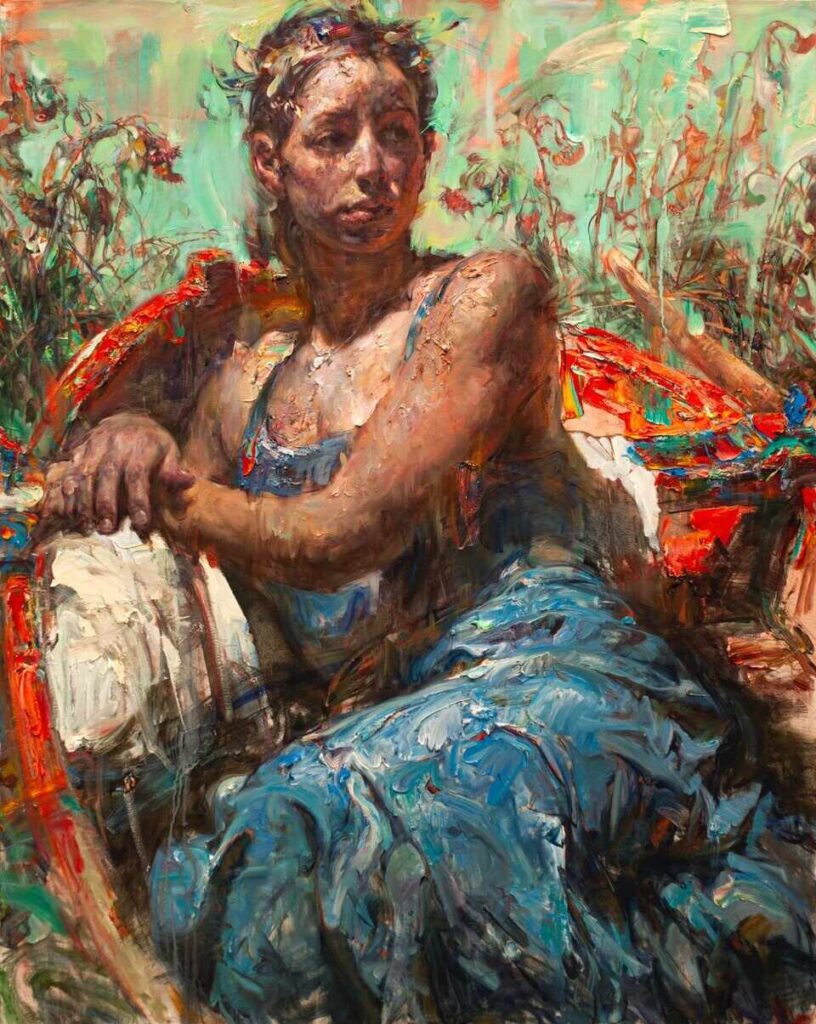
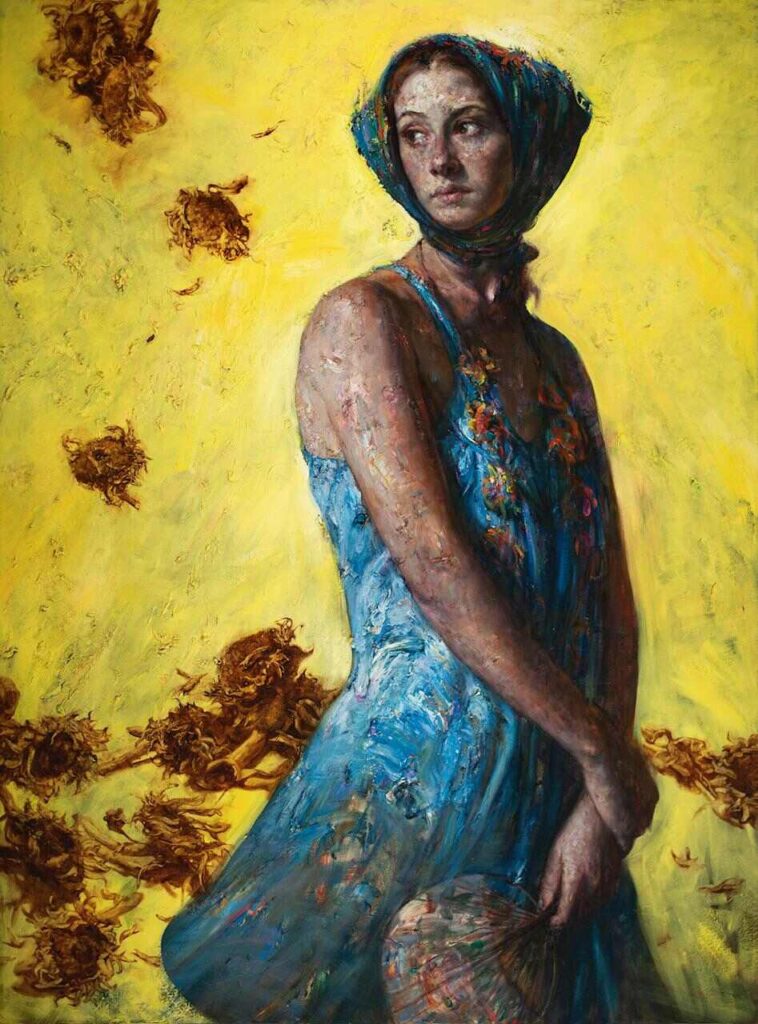
Exclusive Interview with Victor Wang
What did winning the RAYMAR Traditional Art Award in our 2024 Beautiful Bizarre Art Prize mean to you?
I am beyond thrilled to win the award for my work – it truly is an honour. It has deeply affected me personaly and artistically. This recognition not only validates the hard work and passion I put into my art but also encourages me to continue exploring and expressing what I see in the world. This award inspires me to push the boundaries of my artistic journey even further.
Choosing this piece for the competition was a deliberate decision and I hope it resonates the power of nature and spirituality to uplift the human spirit.
Could you tell us about your inspirations behind The Angel of Sunflower, (featured in issue 47), and why you chose it as your submission for the Art Prize?
The Angel of Sunflower was inspired by the idea of hope and resilience. It assembles several symbolic personal references of my life experiences. Sunflowers carry dual meanings for me. When I was a child, I played with my brothers in the sunflower fields – a happy memory of childhood. Sunflowers are also known for their ability to turn and follow the sun.
The sunflower became a political symbol in China during the culture revolution because it represented the people who must follow the leader, Mao Zedong. The wings in the painting imply freedom and opportunity. The hidden Chinese figures are from the Tang Dynasty which is a signature of my East Asian heritage. I wanted to capture this essence in my artwork, portraying an angel that embodies these traits. Choosing this piece for the competition was a deliberate decision and I hope it resonates the power of nature and spirituality to uplift the human spirit.
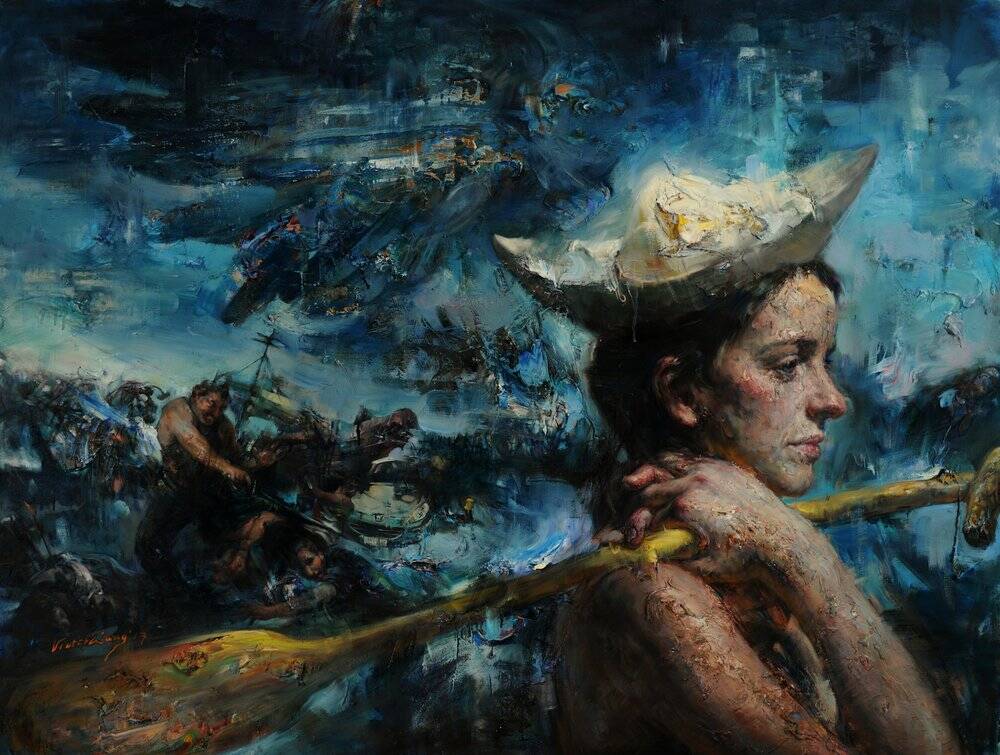
Having originally completed your BFA in China, prior to moving to the US, what differences have you noticed in the way students are taught the skills of figurative art?
Having completed a BFA in China and then moving to the US, I notice several differences in the education of figurative art skills. In China, the teachings in art are adapted from 19th century French academies in combination with Russian academy style. The school focuses intensively on human figure study and emphasises figure drawing skills. America had a similar art teaching system before the 1950s. After the New York School in the 1950s and 60s most art schools in the US abandoned the traditional teaching style, apart from a few such as the New York Academy of Art.
My art academy in China, Lu Xun Academy of Fine Arts, had a more traditional focus, emphasising classical techniques and mastery of foundational skills through rigorous practice. In the US, there is more emphasis on experimentation and personal expression, encouraging students to develop their unique voice alongside technical skills.
My father’s love of art and his stories of arranging and setting up a stage seemed similar to the way one would create a painting composition. When I saw the stage lights on set, they inspired me to learn about lighting effects. Even now, I still like to play with lighting in my paintings to mimic stage lights. My father‘s encouragement and support played a significant role in me pursuing art.
Now, as a professor at Fontbonne University, what do you bring to your students from your years studying in China?
As a professor at Fontbonne University, I have shared my figurative training and experiences with my students to help them gain a comprehensive knowledge of figurative art. I emphasise representational and perceptional skills to encourage students to find their own expression. I give them assignments for experimentation and for them to use their own voices.
Additionally, I emphasise critical thinking by comparing Eastern and Western philosophies. I hope this allows the students to see issues from multiple viewpoints. I also offer insight into the Chinese education system, which can provide a contrasting perspective that fosters a deeper understanding of our own educational practices.
Going back to your childhood, what were your first steps in making art? Did you have family members who influenced your early years as an artist?
Reflecting on childhood and early steps in making art, I was inspired by my father who was a stage actor and director. My father’s love of art and his stories of arranging and setting up a stage seemed similar to the way one would create a painting composition. When I saw the stage lights on set, they inspired me to learn about lighting effects. Even now, I still like to play with lighting in my paintings to mimic stage lights. My father‘s encouragement and support played a significant role in me pursuing art.
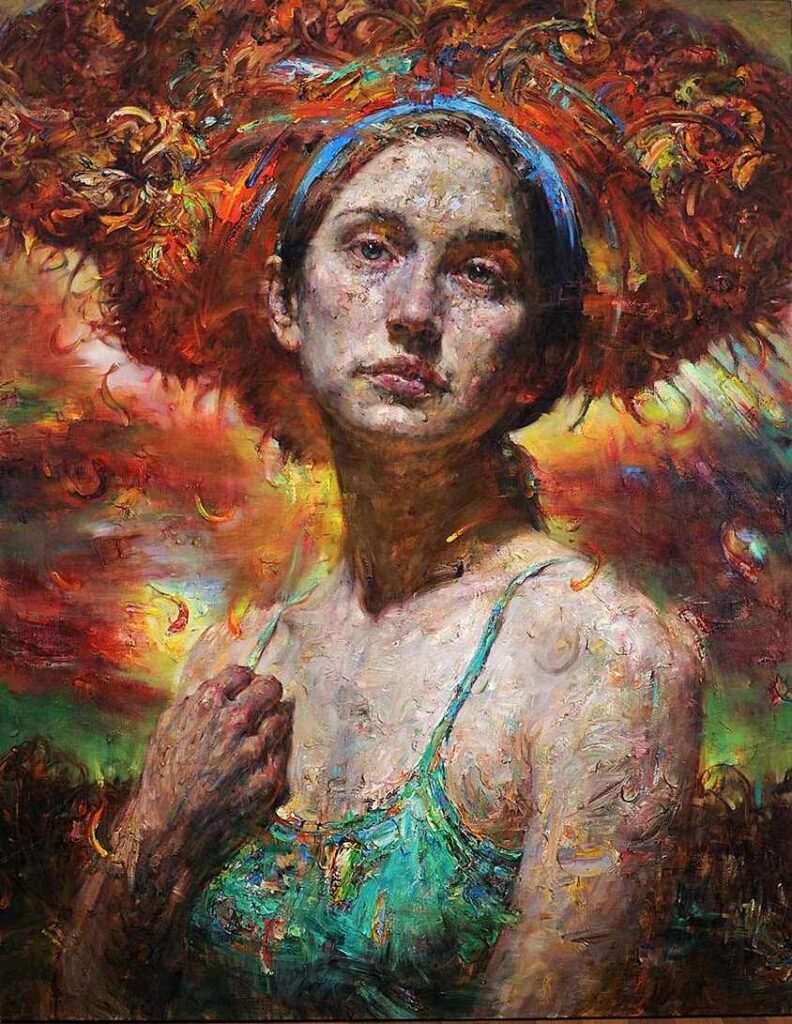
Your time in internment during the Cultural Revolution must have affected you deeply, particularly given the Maoist attitude to the arts. Does this still have an effect on the themes of your work today?
The Cultural Revolution had a profound impact on many individuals in China. During the culture revolution, my father was publicly shamed by the Red Guards of the Communist Party. Seeing my father being paraded around the streets changed my life both physically and emotionally. After graduating from high school, I was sent to a Chinese labour farm camp for “Re-education of the Urban Youth”.
At the labour camp, I was surrounded by sunflower fields. After two years and eight months of hard physical labour I came back to the city because the culture revolution was over. Every time I see sunflowers, I have so many mixed feelings – some sad, some joyous – it’s always a dreamy mixture. I have used sunflowers as personal symbols in my paintings to reflect my life’s journey, evoking a sense of nostalgia for the original feelings and energy. I attempt to illustrate the tension between the life and death of the sunflower’s spirit, a dual way of seeing forms.
The textural nature of your artworks add an additional dimension to the paintings, an almost sculptural quality, how did you develop this technique?
Developing the textural quality in my paintings has been a journey of experimentation and exploration. When I was a graduate student, I took Professor Rudy Torrini’s sculpture class with clay figure study. He recommended that I incorporate Rodin’s sculpture surface and clay marks onto the surface of my paintings. This fascinated me as I had never seen a painting surface like this before.
I began by incorporating various materials, such as gels, pastes, and mixing powder of pigments with paints to create heavy applications on the surface of the canvas. After 20 years of experimentation, I found that this heavy paint application created a tactile and profound visual power. I then changed my entire concept of colour application by using paints on canvas to model the form as a sculptor would use clay.
Over time, I learned how to manipulate these materials to achieve different textures, which allowed me to evoke emotions and invite viewers to engage with the piece more intimately. I also found inspiration in sculptural techniques and began to apply similar principles to my painting process, layering elements and playing with light and shadow.
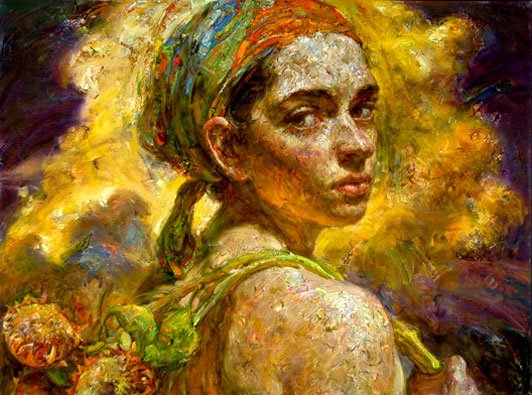
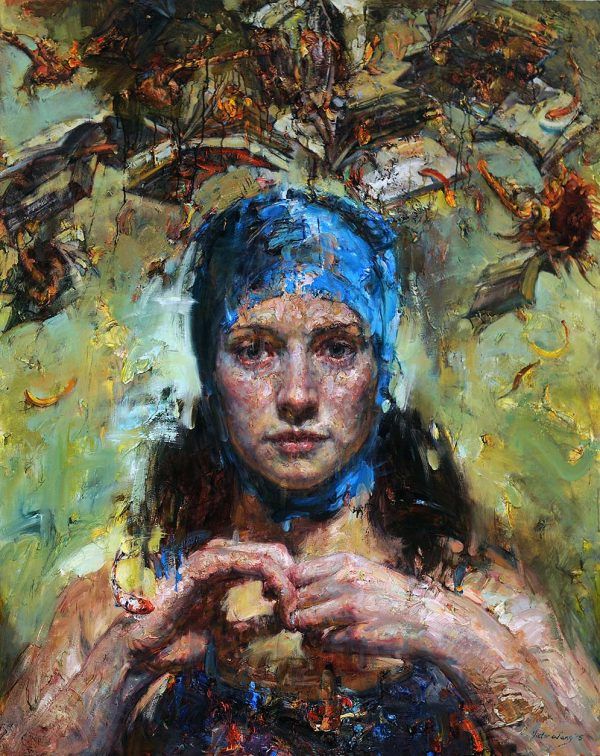
Could you step us through the process for the creation of the texture, how you apply the paint and the difficulties in working this way with oils?
Creating texture with oil paint is a fascinating process. The most important step is to make the white paint buttery and chunky in order to make heavy impasto applications. You can then use this white to mix with other colours and build up layers.
The way I make chunky white is spreading flake white on a newspaper surface less than 1/4 thick and then letting the newspaper soak out extra oil for three days. I then pick up the paint with a palette knife. I use gel medium to modify the paint’s consistency, the medium will increase the texture quality and thickness. Sometimes, I use palette knives and spatulas to apply paints to mimic a sculpture-like surface quality. Furthermore, once the texture is established, I apply glazes (thin layers of transparent paint) to unify the colours and add depth.
The situation in the US, and indeed around the world, seems more fraught – more on edge –than it has for many years. Has this affected your students, or you?
The current global and national tensions can certainly have an impact on students and educators alike. Many students may feel the weight of these issues, leading to increased anxiety or concern about the future. This can manifest in the classroom, affecting their focus, participation, and overall well-being. As an educator, it’s crucial to create a supportive environment where students feel safe to express their feelings and thoughts.
Open discussions about current events can help, along with providing resources for coping and understanding the complexities of the world. It’s also important for educators to take care of their own mental health, as navigating these challenges can be demanding. Overall, fostering a sense of community and resilience can be beneficial for both students and teachers during such uncertain times.
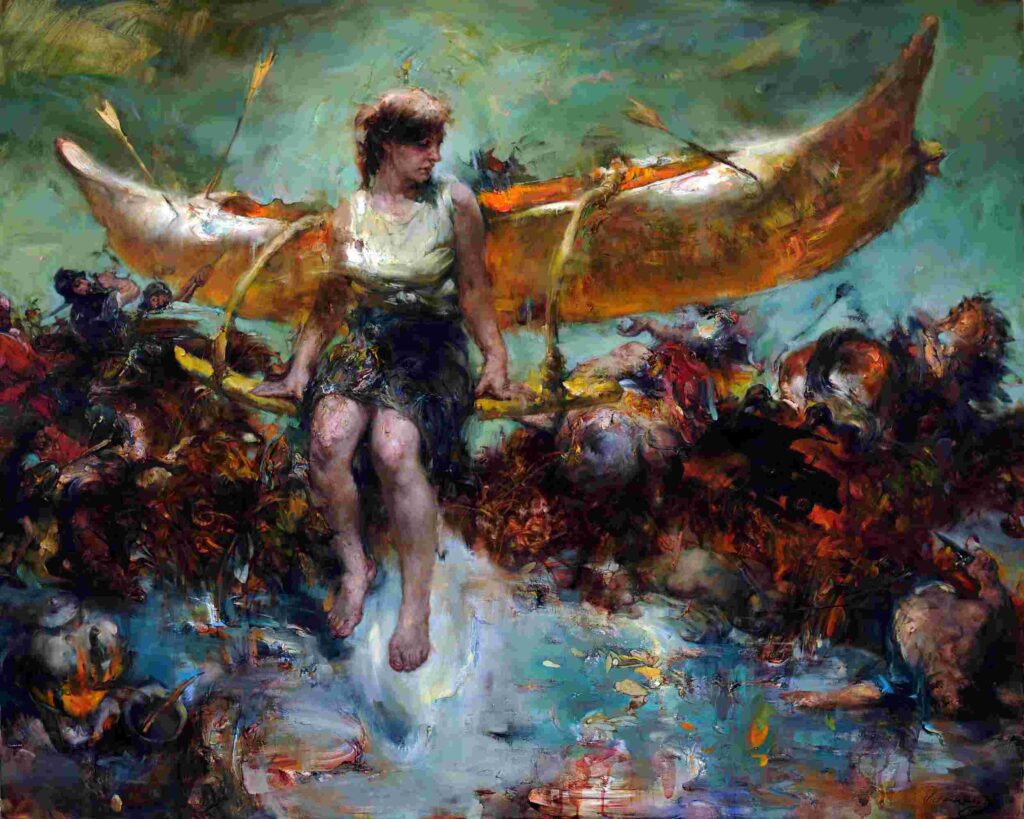
It has been said that all art is political – what do you think the role of the artist is when the world seems less stable, less safe, than it has been?
The idea that all art is political suggests that art reflects and responds to the social, cultural, and political climate of its time. In a world that feels less stable and safe, the role of the artist can be multifaceted. Artists can serve as commentators in consciousness and subconsciousness. It is almost inevitable – using their work to shine a light on injustices and provoke thought about societal issues. They can also be healers, providing solace and a sense of community through shared experiences. Moreover, artists can inspire change, encouraging audiences to engage in critical issues and consider different perspectives.
In times of turmoil, art can be a powerful tool for resistance, expression, and connection, reminding us of our shared humanity and the complexities of the world we inhabit. Ultimately, the artist’s role is to navigate these challenges, using their creativity to make sense of the chaos and contribute to dialogues that matter.
Do you have any particular words of wisdom, of encouragement, that you give to your students when they begin their studies, or when they finish and leave hoping to build a career as a creative?
Remember that your perspective is what makes your art special. Don’t be afraid to express your individuality and let it shine through your work. Keep practicing and be patient with yourself. Constructive criticism is a tool for improvement. Learn to accept it graciously and use it to refine your skills. Keep exploring different mediums, techniques, and styles. Never stop learning, and let your curiosity guide you. There will be ups and downs, but self-belief is crucial. Trust your abilities, and don’t let fear hold you back from pursuing your dreams.
